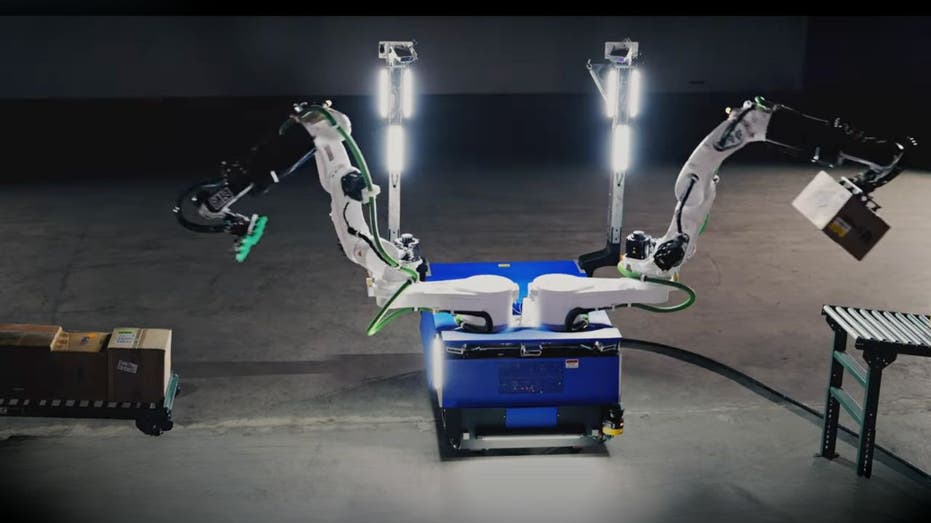- by foxnews
- 08 Apr 2025
Adobe can’t Photoshop out the fact its $20bn purchase of Figma is a land grab | John Naughtom
Adobe can’t Photoshop out the fact its $20bn purchase of Figma is a land grab | John Naughtom
- by theguardian
- 26 Sep 2022
- in technology

The big tech news in a slow week was that the software giant Adobe is planning to pay the unconscionable sum of $20bn (�18bn) to acquire a small company called Figma. Why is this news? Well, first of all, there's the price - way above any rational valuation of Figma. Second, there's the question that we have finally learned to ask about tech mergers and acquisitions: is there a competition or antitrust issue here somewhere?
We'll come to the price later, but at first sight, the answer to the second question would seem to be no: the two companies are not direct competitors. Adobe dominates the market in software for creating and publishing digital and printed material - graphics, photography, illustration, animation, multimedia/video, motion pictures and print. If you've ever used Photoshop, Illustrator, Acrobat Reader or opened a pdf (portable document format), then you've used an Adobe product.
Figma, in contrast, is a smallish company that produces nifty web-based tools to enable teams working on user interface and user experience design projects to collaborate online. None of these tools is a serious competitor for the heavy-duty ones that Adobe markets and indeed the Figma designers have always been ecumenical about what people choose to use in their design work. If a customer uses Adobe Photoshop or Illustrator, well, that's fine by Figma. Its focus is on enabling teams of designers to create workflows - using brainstorms, whiteboards, sticky notes, etc - that suit them and their collective projects.
So why would Adobe want to lay out such a mountain of cash to acquire this minnow? The answer is that its leaders are thinking ahead and they see a strategic threat in the making. In the networked world, more and more work is being done by geographically dispersed teams who have to collaborate online. And in that context, project management and the creation of workflows that are efficient, user-friendly and agile is moving centre stage. As James Carville, Bill Clinton's strategist, might have said: "It's the workflow, stupid!"
And Figma, to all intents and purposes, already owns that workflow space, whereas Adobe only makes tools that people use. As the veteran analyst Ben Thompson puts it in his newsletter, the reason why Adobe is both willing and has no choice but to spend so much is: "Figma is set to be the 'operating system for design', which means that in the long run Adobe has to operate on Figma's terms, not the other way around; to put it another way, Adobe is not only paying for long-run control of design but also its own independence. That alone is worth a whole bunch of money!"
But even that need doesn't quite explain the overpayment. The other reason is that Figma was doing quite nicely and had no need to sell itself. So the offer had to be one that nobody could refuse.
At this point, those with long memories will hear a bell ringing. Way back in 2009, an interesting messaging app appeared on the net. It was called WhatsApp. From the outset, it was clean and efficient and had a simple and honest business model - one year's free use and then a modest annual subscription. And it grew like crazy.
By 2012, Facebook saw WhatsApp as a serious strategic threat. Internal documents extracted by a Federal Trade Commission (FTC) inquiry in 2020 tell the story. One senior executive writes: "This is the biggest threat to our product that I've seen in my five years here at Facebook; it's bigger than G+ [Google Plus] and we're all terrified. These guys actually have a credible strategy: start with the most credible social graph (ie the ones you message on mobile) and build from there." In February 2013, the Facebook board saw a presentation warning that services such as WhatsApp were "a threat to our core businesses, both with respect to social graph and content sharing. They are building gaming platforms, profiles and news feeds [and] have all the ingredients for building a mobile-first social network."
Guess what happened? In 2014, Facebook boss, Mark Zuckerberg, made WhatsApp's founders an offer they couldn't refuse - $19bn - and that was way more than any rational valuation of the company. In an internal document, the move was described as a "land grab" that "prevents probably the only company that could have grown into the next Facebook purely on mobile".
With the hard-won wisdom of hindsight, we now realise that Facebook's acquisition of WhatsApp - just like its earlier purchase of Instagram in 2012 - should never have been allowed. So whether the FTC allows Adobe's land grab of Figma will be a good test of whether the US government has acquired that wisdom. The deal should be challenged, investigated and banned. And if it isn't, then we will know that tech companies still have little to fear from regulators - other than the odd, affordable, multibillion-dollar fine.
Snap electionWhat's Breaking Democracy? is William Janeway's astute review of important new books by Gary Gerstle and Helen Thompson on the Project Syndicate website.
Drawing conclusionsThe giant gulf between drawing a picture and understanding the world is the subject of a characteristically sharp essay, The Road to AI We Can Trust, by Gary Marcus on the Substack platform that addresses new artificial intelligence-powered drawing tools.
Royal appointmentAndrew Sullivan's Weekly Dish offering An Icon, Not an Idol, also hosted on Substack, is an insightful assessment of the late Queen.
- by foxnews
- descember 09, 2016
Ancient settlement reveals remains of 1,800-year-old dog, baffling experts: 'Preserved quite well'
Archaeologists have recently unearthed the remarkably well-preserved remains of a dog from ancient Rome, shedding light on the widespread practice of ritual sacrifice in antiquity.
read more





